Food tours that showcase local cuisine are a great way to explore a new city or region and learn about the unique flavors and culinary traditions of the area.
- Introduction
- 4 Benefits of Taking a food tour
- Four Types of food tours
- Examples of 5 food tours that showcase local cuisine
- 5 Tips for Planning a Food Tour
- Conclusion
Introduction
Explanation of What Food Tours are
Food tours are a unique way to experience the cuisine of a city, region, or country. These tours are designed to take visitors on a culinary journey through a particular area, introducing them to the local food and drink scene, and providing them with a taste of the local culture. They are usually guided tours that include visits to various restaurants, cafes, food markets, and other food-related businesses, with tastings at each stop.
Food tours have become increasingly popular in recent years, as more and more people have come to appreciate the importance of food in understanding a particular culture. Food is often a reflection of a place’s history, geography, and traditions, and by trying local dishes and ingredients, visitors can gain a deeper understanding of the local way of life.
Food tours can be found in most major cities around the world, with different tour operators offering a variety of experiences. Some tours are walking tours that take visitors through a particular neighborhood, while others are bus or van tours that cover a wider area. Some tours are focused on a particular cuisine or type of food, while others provide a more general overview of the local food scene.
There are a couple of my articles that you should browse through to give you a background on this topic.
- Non-Touristy Things to do on Vacation: curious about culture
- Group Tours and Vacations
- Choosing the Best Tour Company
Why Food Tours Are Popular
Food tours have become increasingly popular in recent years due to several reasons:
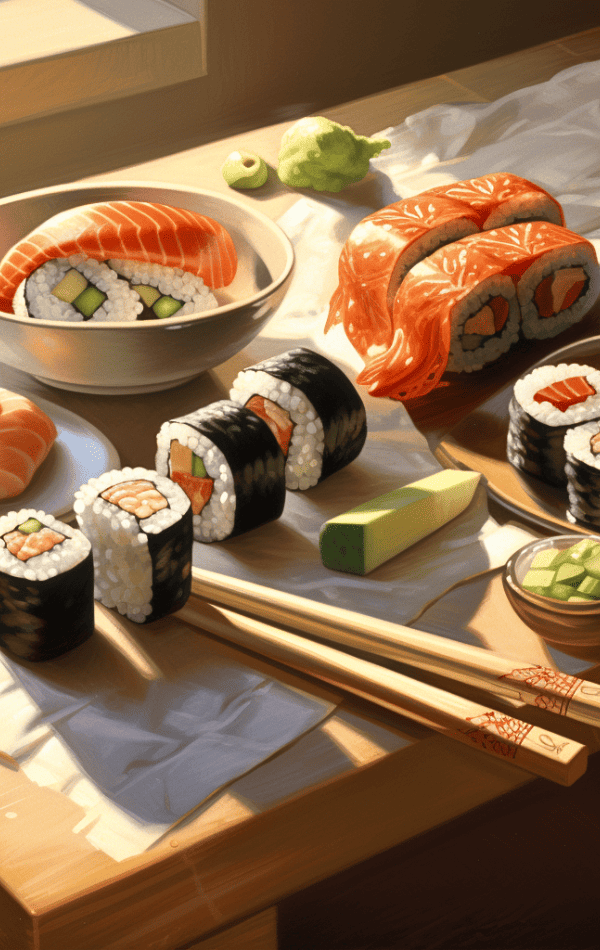 | Firstly, people are becoming more interested in the culinary traditions and local food scenes of the places they visit. Food is an essential part of any culture, and trying local dishes is a great way to get a taste of the local way of life. As people become more curious about food, they are more likely to seek out food tours as a way to experience new tastes and flavors. |
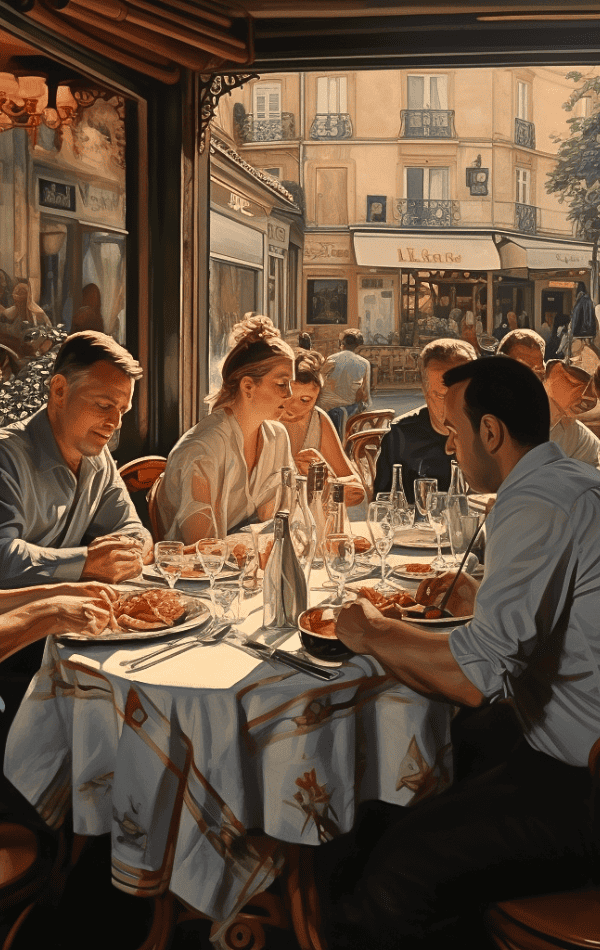 | Secondly, food tours offer a unique and authentic way to explore a city or region. Tourists often flock to the same well-known restaurants and tourist hotspots, but food tours provide an opportunity to explore off-the-beaten-path places that locals frequent. Visitors can discover hidden gems that they might not have found otherwise, and get an insider’s perspective on the best food in the area. |
 | Thirdly, food tours are often led by knowledgeable and passionate local guides who can provide a deeper understanding of the local food scene. Tour guides are often food experts who have a passion for the cuisine and history of their city or region. They can offer fascinating insights into the origins of dishes, the techniques used to prepare them, and the cultural significance of different foods. |
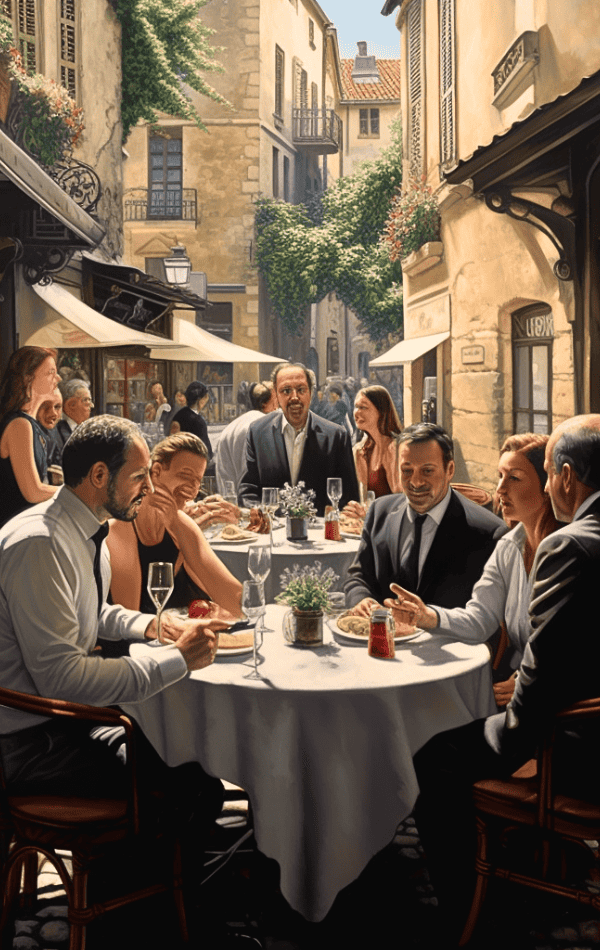 | Lastly, food tours are a social experience that can be enjoyed with others. Many food tours are designed to be shared experiences, where visitors can meet other travelers and locals who share a love of food. Sharing a meal with others is a great way to connect and make new friends and food tours offer a unique opportunity to do so while experiencing new tastes and flavors. |
4 Benefits of Taking a food tour
Taking a food tour provides visitors with a unique opportunity to try new and exciting foods. The chance to sample different flavors and ingredients in a short period, combined with the knowledge and expertise of the tour guide, makes for a fun and educational experience that is not to be missed.
1. Opportunity to try new foods
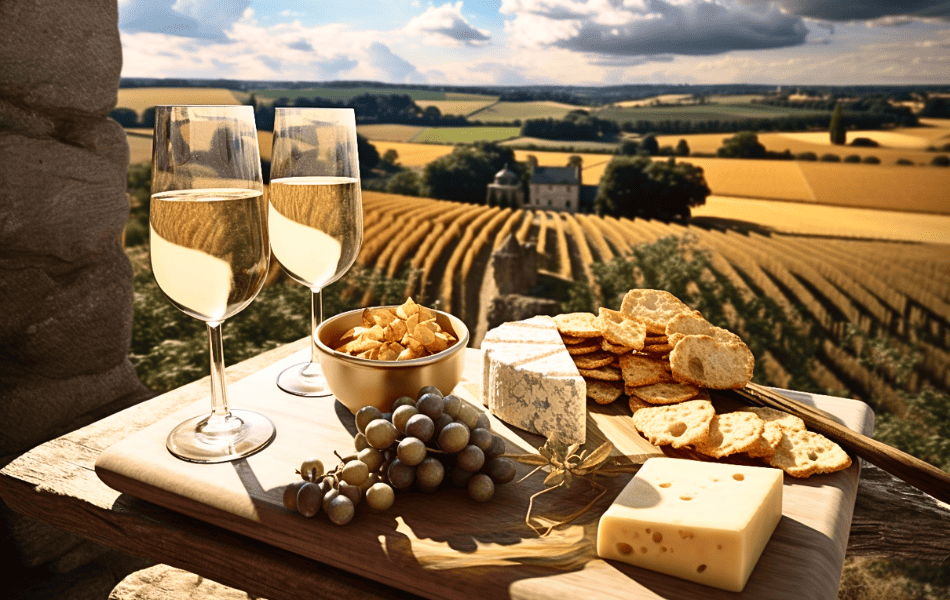
One of the biggest benefits of taking a food tour is the opportunity to try new and exciting foods. Food tours are designed to introduce visitors to the local cuisine and provide them with a taste of the unique flavors and ingredients of a particular region. Tour guides are often locals who are passionate about their city’s food scene and can provide visitors with insights into the history and culture behind each dish.
By taking a food tour, visitors can step outside of their comfort zone and try dishes they might not have discovered on their own. This can include exotic ingredients or dishes that are prepared in a way that is unfamiliar to them. Trying new foods is not only a delicious experience but also an educational one. Visitors can learn about the ingredients used in different dishes, the cooking techniques involved, and the cultural significance of each dish.
Moreover, food tours offer a variety of tastings, so visitors can try multiple dishes in a short period. This means that visitors can sample a range of flavors and ingredients in a relatively short time, rather than having to visit multiple restaurants or cafes on their own. It is an efficient and enjoyable way to experience the local cuisine.
2. Chance to learn about the history and culture of a place through its food
Taking a food tour provides a unique opportunity to learn about the history and culture of a place through its cuisine. By exploring the stories behind the dishes, visitors can gain a deeper appreciation for the local culture and connect with the people who prepare the food.

History and Culture
In addition to the opportunity to try new foods, taking a food tour also provides visitors with a chance to learn about the history and culture of a place through its cuisine. Food is an integral part of a region’s culture and history, and food tours offer an immersive way to discover the stories behind the dishes.
Locations that Provide a Rich Cultural History
Food tours often include visits to local markets, food stalls, and restaurants that have a rich cultural history. Tour guides can provide fascinating insights into the origins of different dishes, the cooking techniques used, and the cultural significance of certain ingredients or flavors. For example, a food tour in Mexico might explore the history and significance of corn and how it is used in different dishes, such as tortillas, tamales, and pozole.
Social and Economic History
Food tours can also provide insights into the social and economic history of a region. For example, a tour of a city’s street food scene might reveal how food vendors have played a vital role in the city’s economy and how the local government has interacted with them over time.
Greater Appreciation for Local Cuisine
By learning about the history and culture of a place through its food, visitors can gain a more profound appreciation for the local cuisine and the people who prepare it. It also allows visitors to connect with the local community and gain a deeper understanding of their way of life.
3. Opportunity to meet and interact with locals

Another benefit of taking a food tour is the opportunity to meet and interact with locals.
- Tour guides are often locals themselves who are passionate about their city’s food scene and can provide visitors with a unique perspective on the culture and community.
- Visitors can learn about the local customs, traditions, and way of life from people who live and work in the area.
- Food tours often include visits to local markets, food stalls, and restaurants, where visitors can interact with the vendors and chefs and learn about their personal stories and experiences.
By meeting and interacting with locals, visitors can gain a deeper understanding of the local culture and build connections with the community. It’s a great way to make new friends, practice language skills, and experience local hospitality.
4. Opportunity to support local businesses
Another important benefit of taking a food tour is the opportunity to support local businesses.
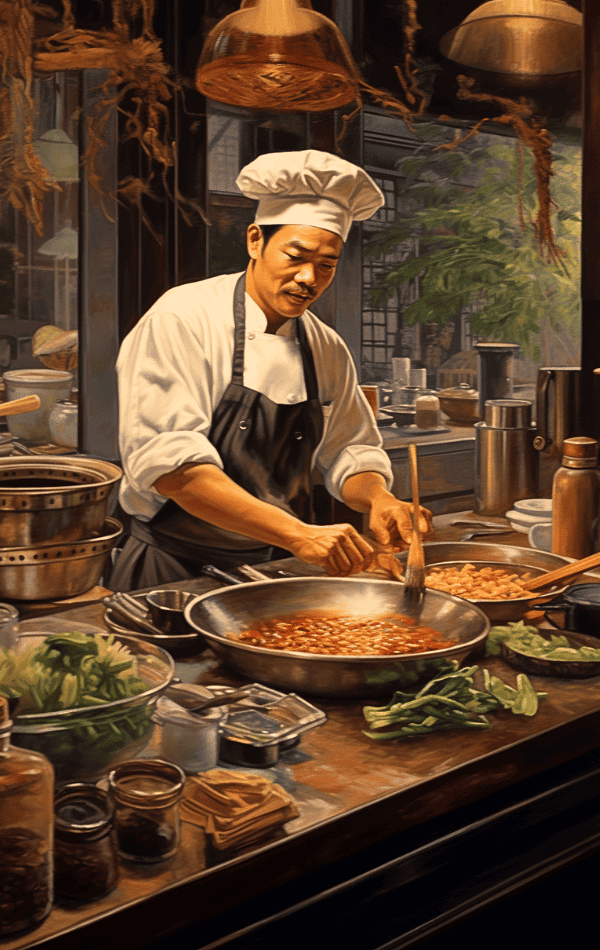
Support Local Businesses
Food tours often include visits to local markets, food stalls, and restaurants that are independently owned and operated by members of the community. By patronizing these businesses, visitors can directly support the local economy and help to sustain the cultural and culinary heritage of the region.
Working with Small, Local Businesses
Additionally, many food tours prioritize working with small, local businesses that prioritize sustainable and ethical practices. By supporting these businesses, visitors can contribute to a more responsible and sustainable tourism industry.
Discover Hidden Gems
Food tours are also a great way to discover hidden gems and lesser-known spots that might not be as popular with tourists. By visiting these local businesses, visitors can have a more authentic and immersive experience while also supporting the local community.
Overall, taking a food tour is an excellent way to support local businesses, promote sustainable tourism practices, and help to preserve the unique culinary and cultural heritage of a region.
Four Types of food tours
1. Walking Tours

What is one of the most popular types of food tours?
One of the most popular types of food tours is a walking tour. These tours typically take visitors on a walking route through a city or neighborhood, stopping at various food establishments along the way to sample the local cuisine.
Walking tours are a great way to explore a new city on foot and discover hidden gems that might not be as easily accessible by other means of transportation. Tour guides can provide interesting commentary and insights into the history and culture of the area, and visitors can also get a good workout while enjoying the delicious food.
They are usually conducted in small groups, which creates a more intimate and personalized experience. It’s a great opportunity to make new friends and connect with fellow food lovers. Walking tours are also an excellent option for those who have limited time or want to get a quick taste of a city’s food scene.
Overall, walking food tours provide an immersive and engaging way to explore a city’s culinary offerings while also getting some exercise and fresh air.
2. Bus or van tours
These tours usually involve a larger group of people and are conducted on a bus or van that transports visitors to different food establishments throughout the area.

Bus or van tours are a good option for those who have limited mobility or prefer not to walk long distances. They can also cover a larger area or multiple neighborhoods, providing a more comprehensive culinary experience. Tour guides can provide interesting commentary and insights into the history and culture of the area, and visitors can enjoy the convenience of being transported from place to place.
They are also a great way to sample a variety of different types of food and cuisine in a short amount of time. It’s important to note that bus or van tours can be less personalized and intimate than walking tours due to the larger group size. However, they can still provide a fun and enjoyable way to explore a city’s food scene while also meeting new people and learning about the local culture.
3. Bike tours
These tours usually involve cycling through a city or neighborhood and stopping at various food establishments along the way to sample the local cuisine. Bike tours are a great option for those who enjoy cycling and want to cover more ground than a walking tour.

They also provide a more eco-friendly and sustainable way to explore a city’s food scene. Tour guides can provide interesting commentary and insights into the history and culture of the area, and visitors can enjoy scenic views and fresh air while cycling.
Usually conducted in small groups, which creates a more intimate and personalized experience. They can also cover a larger area or multiple neighborhoods, providing a more comprehensive culinary experience. However, it’s important to note that bike tours can be physically demanding and may not be suitable for everyone.
| It’s important to check with the tour company beforehand to ensure that the tour is appropriate for your fitness level. |
Overall, bike tours provide an adventurous and unique way to explore a city’s food scene while also staying active and enjoying the outdoors.
4. Private tours
Private food tours are a more exclusive option for those who prefer a more personalized and intimate culinary experience.

Size of Tours
These tours are usually arranged for small groups or individuals and can be customized to meet specific interests or dietary requirements. Private tours can be conducted by a tour guide or a local food expert, who can provide insider knowledge and recommendations on the best food establishments to visit.
Themes of Tours
They can also be tailored to specific themes, such as wine and cheese tasting or street food tours. They offer a more flexible schedule and can be conducted at any time of the day or night, depending on the preferences of the group.
Pricing
Private tours can be more expensive than group tours, but they provide a more exclusive and tailored experience that is well worth the investment for those looking for a unique and unforgettable culinary adventure.
Private food tours offer a luxurious and personalized way to explore a city’s food scene while enjoying the company of friends or family.
Examples of 5 food tours that showcase local cuisine
i. New York City food tours
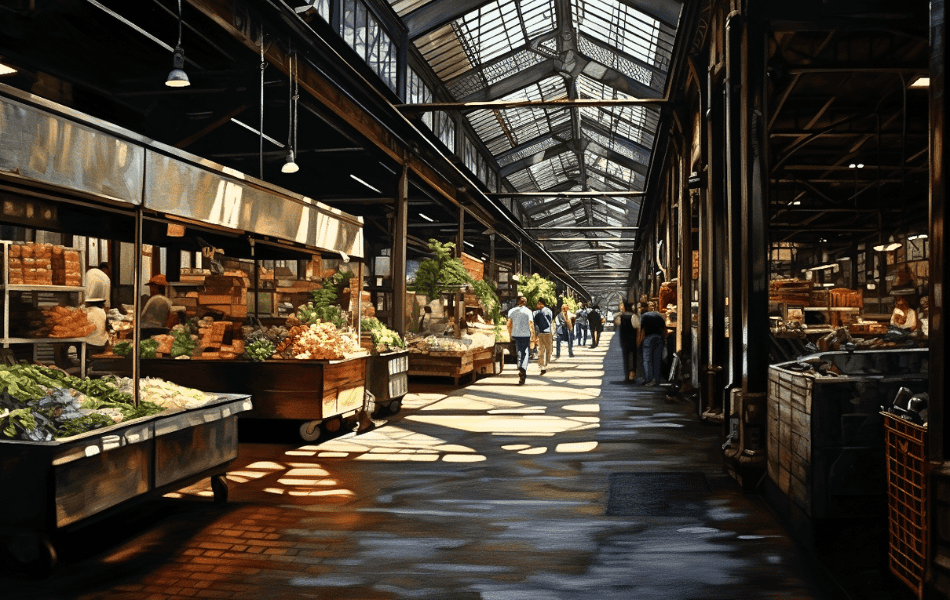
New York City is a food lover’s paradise, and there are plenty of food tours that showcase the city’s diverse culinary scene. Here are three examples of food tours that are worth checking out:
- Greenwich Village Food Tour: This walking tour takes visitors through the historic Greenwich Village neighborhood, stopping at various food establishments along the way to sample the local cuisine. Visitors can expect to try classic New York dishes like pizza and bagels, as well as international flavors like falafel and cannoli.
- Chelsea Market and Meatpacking District Food Tour: This walking tour explores two of New York’s most popular food destinations: Chelsea Market and the Meatpacking District. Visitors can expect to try a variety of artisanal foods, including fresh seafood, gourmet cheese, and handmade chocolates.
- Brooklyn Pizza Walk: This walking tour takes visitors on a journey through Brooklyn’s pizza scene, where they can sample some of the city’s best slices. The tour includes stops at a variety of pizzerias, from classic neighborhood joints to modern artisanal shops, giving visitors a taste of the diverse and delicious pizza culture in Brooklyn.
ii. Tokyo food tours

Tokyo is a foodie’s paradise, offering a wide variety of traditional and modern cuisine to explore. Here are three examples of Tokyo food tours that showcase the city’s unique culinary culture:
- Tsukiji Fish Market Food and Culture Walking Tour: This tour takes visitors through Tokyo’s famous Tsukiji Fish Market, where they can learn about the history and culture of the market while sampling fresh seafood dishes. Visitors can expect to try a variety of sushi, sashimi, and other seafood specialties.
- Izakaya Alley Evening Food Tour: This evening tour takes visitors through Tokyo’s lively izakaya (Japanese pub) scene, where they can try a variety of traditional Japanese dishes and drinks while experiencing the local nightlife. Visitors can expect to try dishes like yakitori (grilled chicken skewers), kushiyaki (grilled skewered meat and vegetables), and tempura (deep-fried seafood and vegetables).
- Shibuya Food and Culture Walking Tour: This tour takes visitors through the bustling Shibuya district, where they can sample a variety of local dishes while learning about the history and culture of the area. Visitors can expect to try traditional Japanese dishes like ramen and gyoza, as well as modern fusion cuisines like Japanese-style burgers and crepes. The tour also includes visits to local shops and markets where visitors can purchase unique souvenirs and ingredients to take home.
iii. Paris food tours

Paris is known as the culinary capital of the world, offering a rich and diverse culinary scene. Here are three examples of food tours that showcase the best of Parisian cuisine:
- Paris Food Tour: This walking tour takes visitors through some of Paris’s most famous neighborhoods, including the Marais, Latin Quarter, and Saint-Germain-des-Prés, stopping at various food establishments along the way to sample the local cuisine. Visitors can expect to try classic French dishes like croissants, baguettes, cheese, and charcuterie, as well as international flavors like falafel and Lebanese sweets.
- Montmartre Food Tour: This walking tour takes visitors through the charming Montmartre neighborhood, where they can sample a variety of French dishes while learning about the history and culture of the area. Visitors can expect to try traditional French cuisines like escargots (snails), bouillabaisse (fish stew), and coq au vin (chicken in red wine), as well as local sweets like macarons and éclairs.
- Wine and Cheese Tasting Tour: This tour takes visitors to some of Paris’s best wine and cheese shops, where they can taste a variety of French wines and cheeses while learning about the history and production of these beloved culinary staples. Visitors can expect to try a variety of cheeses like Camembert, Roquefort, and Comté, paired with local wines like Bordeaux, Burgundy, and Champagne.
iv. Bangkok food tours
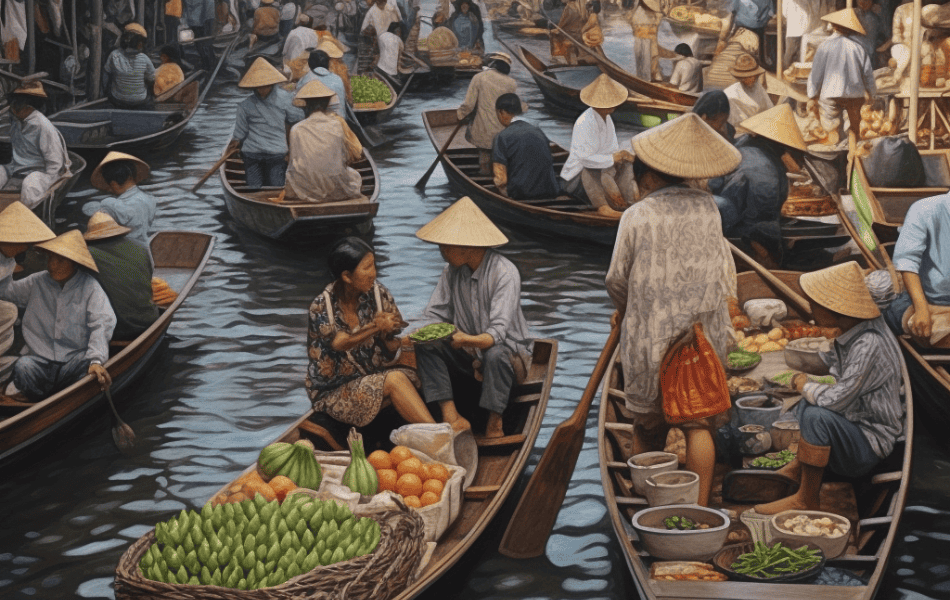
Bangkok is a vibrant and bustling city with a rich culinary heritage. Here are three examples of food tours that showcase the best of Bangkok’s cuisine:
- Bangkok Street Food Tour: This walking tour takes visitors through Bangkok’s bustling streets, where they can try a variety of street food dishes and snacks from local vendors. Visitors can expect to try classic Thai dishes like pad Thai, som tam (papaya salad), and khao man gai (chicken rice), as well as lesser-known specialties like grilled squid and mango sticky rice.
- Chinatown Food Tour: This walking tour takes visitors through Bangkok’s bustling Chinatown district, where they can sample a variety of Chinese and Thai dishes while learning about the history and culture of the area. Visitors can expect to try dishes like dim sum, roast duck, and Thai-style stir-fried noodles.
- Floating Market Tour: This tour takes visitors to one of Bangkok’s famous floating markets, where they can try a variety of local dishes and snacks from boats and stalls on the water. Visitors can expect to try dishes like boat noodles, grilled seafood, and coconut pancakes, as well as shopping for unique souvenirs and handmade crafts. The tour also includes a scenic boat ride through the canals of Bangkok.
v. Lima food tours
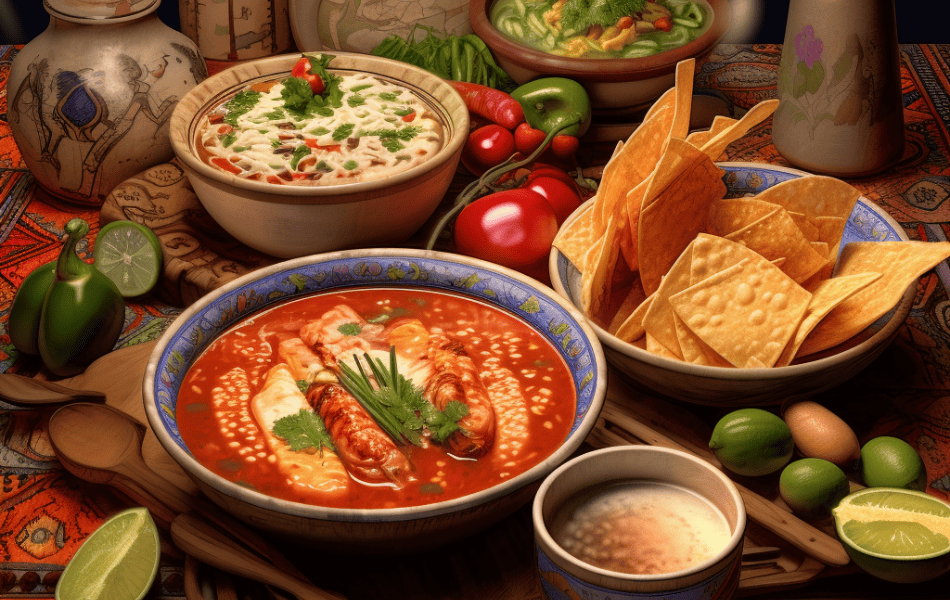
Lima is known as the gastronomic capital of South America, with a rich culinary tradition that combines indigenous ingredients with influences from Spanish, African, and Asian cuisine. Here are three examples of food tours that showcase Lima’s vibrant culinary scene:
- Lima Gourmet Food Tour: This tour takes visitors through the historic center of Lima, where they can try a variety of traditional Peruvian dishes and learn about the history and culture of the area. Visitors can expect to try dishes like ceviche, lomo saltado (beef stir-fry), and causa (a potato-based dish), as well as sampling artisanal chocolates, craft beers, and pisco (a local brandy).
- Barranco Food Tour: This walking tour takes visitors through the trendy Barranco neighborhood, where they can sample a variety of modern Peruvian dishes and cocktails from hip restaurants and bars. Visitors can expect to try dishes like tiradito (a variation of ceviche), anticuchos (grilled skewers), and churros, as well as sampling creative cocktails made with local ingredients like pisco and chicha (a fermented corn drink).
- Lima Market Tour: This tour takes visitors to one of Lima’s bustling markets, where they can sample a variety of street food dishes and snacks from local vendors. Visitors can expect to try dishes like empanadas, tamales, and chicharrones (fried pork), as well as browse for fresh produce, spices, and souvenirs. The tour also includes a visit to a nearby restaurant, where visitors can learn how to make their own ceviche and pisco sour cocktails.
5 Tips for Planning a Food Tour
1. Research the local cuisine
– Take the time to explore the culinary traditions of the area you’re visiting, including the most popular dishes, ingredients, and cooking techniques. Look for information about local food festivals, markets, and restaurants, and read reviews and recommendations from other travelers. Consider dietary restrictions or food allergies that may affect the choices you make. This will help you to create an itinerary that highlights the best of the local cuisine and ensures that everyone in your group has a delicious and enjoyable experience.


2. Read reviews of food tours
– By reading the experiences of other travelers, you can get a sense of the quality and variety of the food, the expertise of the guides, and the overall value of the tour. Look for reviews on popular travel websites such as TripAdvisor, Yelp, and Google Reviews, as well as on the websites of the tour operators themselves. Don’t be afraid to read both positive and negative reviews to get a balanced perspective, and pay attention to the feedback about the quality of the food, the pacing of the tour, and the level of engagement of the guides.
3. Consider dietary restrictions
– Many food tours offer vegetarian, vegan, or gluten-free options, but it’s important to communicate your needs in advance to ensure that the tour operator can accommodate them. Be clear about your restrictions and ask if there are any dishes or ingredients that you should avoid. If you’re unsure if a particular tour can accommodate your needs, don’t hesitate to reach out to the tour operator and ask. Keep in mind that some dietary restrictions may limit the variety of foods that you can try on a food tour.


4. Dress appropriately
– Comfortable walking shoes are a must, as many food tours involve walking or standing for extended periods of time. Dress in layers, as you may be going in and out of air-conditioned spaces or outdoor environments. It’s also a good idea to bring a small bag or backpack to carry any souvenirs or food samples that you may receive during the tour. Depending on the location and time of year, you may also want to bring sunscreen, a hat, or an umbrella. Finally, remember that you’ll be interacting with other people during the tour, so dressing in clean and presentable clothing is a good idea.
5. Bring water and comfortable shoes

When planning a food tour, it’s important to come prepared with a few essential items to ensure that you’re comfortable throughout the experience. One of the most important things to bring is a refillable water bottle. Food tours can be dehydrating, and you’ll want to stay hydrated throughout the day.
Bringing a comfortable pair of walking shoes is also crucial, as many food tours involve a lot of walking or standing. Be sure to break in any new shoes before the tour, so you don’t end up with blisters or sore feet. If you’re traveling to a new city or country, it’s also a good idea to bring a map or download an offline map app on your phone, just in case you get lost during the tour.
Conclusion
Don’t be afraid to try new foods and step outside of your culinary comfort zone – you never know what delicious discoveries you might make. So, what are you waiting for? Book a food tour on your next trip and get ready to embark on a gastronomic adventure.

“A full stomach makes a satisfied heart“
Chinese Proverb
Recent Posts
Discover insider tips to find cheap flights from the UK, save on easyJet, Ryanair & BA, and score the best weekend and last-minute deals. Why You’re Paying Too Much for Flights Most UK...
Discover the sounds of travel, from laughing kookaburras to market chatter, church bells to ocean waves - a journey heard as much as seen. It always starts with a sound. The other day, walking...


8 thoughts on “A Guide to Food Tours that Showcase Authentic Cuisine”
Comments are closed.